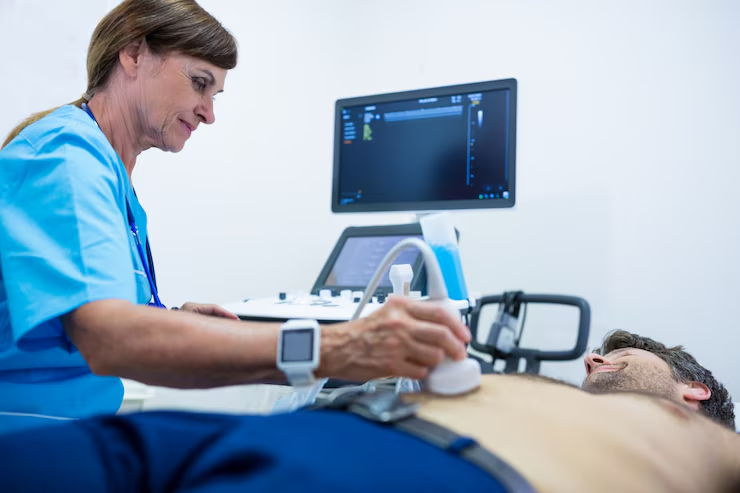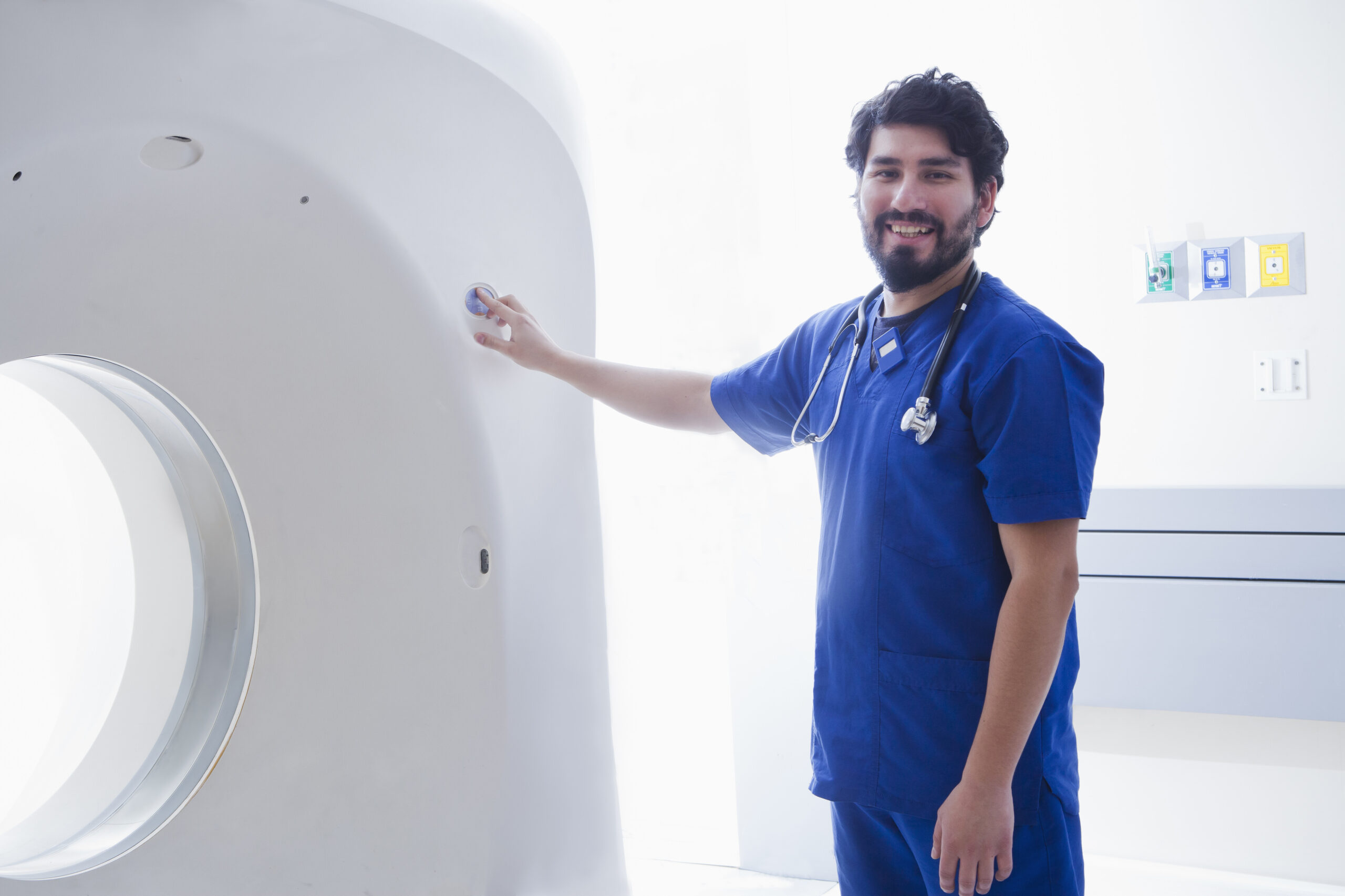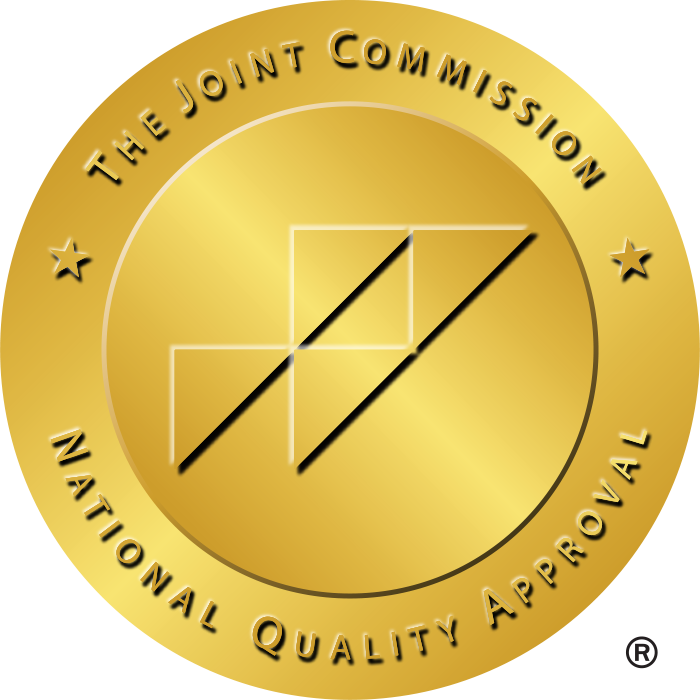As the medical sector expands with progress, medical professionals are required to pursue advanced certification to meet the requirements. In this pursuit of advancement, ultrasound tech jobs are not behind. Ultrasound technicians, also known as sonographers, are an essential part of the medical teams, especially in modern healthcare. This is because treatment for any medical condition is impossible without diagnosis, and an ultrasound helps professionals look inside the patient to identify the underlying cause.
Ultrasound tech jobs use high-frequency sound waves to produce detailed images of the body’s internal structures. This way, ultrasound techs assist in diagnosis and treatment. Due to this critical role, the demand for ultrasound tech jobs is rising. Hence, securing the right certification is important to significantly enhance your employability, increase your earning potential, and open doors to more specialised roles.
However, understanding the top certifications and how they impact your professional standing in the job market is essential to successfully upgrading your credentials. There are many recognized credentialing bodies, like ARDMS, ARRT, CCI, and more, that offer various certifications for ultrasound tech jobs.

Why Certifications Matter for Ultrasound Tech Jobs?
Certifications hold much value for ultrasound tech jobs. This is because they not only validate your skills and offer deeper knowledge but also provide a strong professional standing in the competitive job market. With the right certifications, you can become the top choice of most employers.
In the ever-evolving landscape of the medical industry, employers often list jobs with compulsory certification from accredited organizations as requirements. Hence, oftentimes certifications transition from a want to a necessity. This is why ultrasound techs often go for different certifications.
Moreover, certified ultrasound techs are typically offered higher ultrasound tech salary due to their extensive knowledge and skills. This can also open doors to more advanced and specialized ultrasound tech jobs, where you can maximize your earning potential.
Top Accredited Certifications for Ultrasound Tech Jobs
The most recognized certifications for ultrasound tech jobs are the ones offered by the American Registry for Diagnostic Medical Sonography (ARDMS) and the American Registry of Radiologic Technologists (ARRT). Other credentialing bodies also offer ultrasound tech certifications like Cardiovascular Credentialing International (CCI), National Center for Competency Testing (NCI), Joint Commission on Allied Health Personnel in Ophthalmology (JCAHPO), etc.
Let’s have a look at some of the top certifications from these credentialing bodies:
1. ARDMS — American Registry for Diagnostic Medical Sonography
The ARDMS is the most widely recognized certification for ultrasound tech jobs. It offers a range of credentials based on specialization, such as:
- RDMS (Registered Diagnostic Medical Sonographer)
- RDCS (Registered Diagnostic Cardiac Sonographer)
- RVT (Registered Vascular Technologist)
- RMSKS (Registered Musculoskeletal Sonographer)
To qualify, candidates must meet educational and clinical experience requirements and pass rigorous exams. Most employers in hospitals, imaging centers, and OB/GYN practices prefer or require ARDMS-certified candidates. It’s a key to landing the best sonographer jobs and increasing your ultrasound technician salary.
2. CCI — Cardiovascular Credentialing International
CCI offers several valuable credentials for those pursuing careers in cardiac, vascular, and phlebology ultrasound. Two of the top certifications for ultrasound tech jobs from CCI are:
If you’re specifically targeting cardiovascular sonographer roles, CCI certifications are often accepted alongside or instead of ARDMS certifications. Cardiac sonographer salary is often higher than that of general ultrasound tech jobs. Due to these certifications from CCI, you can enhance your earning potential and earn a higher cardiac sonographer salary.
Job Insight:
Certified cardiac sonographers enjoy a competitive cardiac sonographer salary, often exceeding that of general sonographers.
3. ARRT — American Registry of Radiologic Technologists
Though ARRT is best known for radiologic and MRI technologist certification. However, they also offer Sonography credentials as it is also an imaging modality similar to MRI. It’s an excellent alternative for those entering the field from a radiologic background. The general certification for sonographers from ARRT is Registered Technologist in Sonography (R.T.).
Since the profession is much similar to MRI tech jobs, many professionals cross-train. Hence, with a growing interest in MRI tech jobs, they can get lucrative MRI tech salary packages.
4. NCCT — National Center for Competency Testing
While not as widely accepted as ARDMS or CCI, NCCT offers a National Certified Medical Sonographer (NCMS) credential that can be beneficial for entry-level techs, especially in smaller facilities or clinics. Consider NCCT if you’re already working in allied healthcare and looking to transition into sonography.
5. JCAHPO — Joint Commission on Allied Health Personnel in Ophthalmology
The JCAHPO offers ophthalmic ultrasound certifications, which can be a good addition for ultrasound tech jobs if you are planning to pursue ophthalmic specialization.
Career Outlook and Opportunities for Ultrasound Tech Jobs
According to the U.S. Bureau of Labor Statistics, the growth rate of diagnostic medical sonographer jobs is 14% over the next decade, which is well above the average for all occupations. This means more listings for:
- Ultrasound tech jobs near me
- Sonographer jobs
- Travel ultrasound tech jobs in hospitals, clinics, and mobile imaging units
You’ll also find ultrasound tech roles in departments like labor and delivery, cardiology, and even emergency rooms (ER tech jobs).
Additional Career Paths to Explore for Ultrasound Techs
Many ultrasound techs later pursue other healthcare certifications to expand their scope or shift focus. Common crossover careers include:
- MRI Technologist – Certified ultrasound techs can also transition into MRI tech jobs with some certifications. This is because both imaging modalities have many similarities.
- Travel Sonography – Consider travel jobs or allied travel careers if you crave flexibility and higher pay.
Search tip: Look for travel ultrasound tech jobs via top allied travel career platforms and healthcare staffing agencies.
How to Choose the Right Certification
When selecting a certification, consider:
- Your Career Goals – Do you want to specialize in vascular, OB/GYN, or cardiac sonography?
- Employer Requirements – Check local ultrasound tech job listings to see preferred credentials.
- Geographic Preferences – Salaries and certification requirements vary by region.
- Advancement Opportunities – Certifications like ARDMS and CCI open doors to supervisory or teaching roles.
Helpful Resources for Ultrasound Tech Jobs
- You can check your state’s Board of Nursing websites, official job boards, and even healthcare staffing agencies. They often list approved programs and advancement certifications.
- If you’re interested in the education and training of new and upcoming ultrasound tech professionals, look for CHSE (Certified Healthcare Simulation Educator) programs.
- Keep an eye out for certification discounts and educational events that also include allied health professions.
Final Thoughts
Whether you’re looking for ultrasound tech jobs, planning to specialize in cardiology, or exploring travel sonography roles, certification is your passport to career advancement. With credentials from ARDMS, CCI, ARRT, or NCCT, you’ll not only increase your ultrasound technician salary but also gain access to a wider range of sonographer jobs near me and beyond.
As the demand for skilled technicians continues to grow, now is the perfect time to invest in your future. Hence, search for the best certificates that match your specialization and align with your goals. And if you’ve been wondering, “How much do ultrasound techs make?” the only answer is in understanding that with the right certification, the sky is the limit.
If you are looking for the best and highest-paying ultrasound tech jobs, consider connecting with a healthcare staffing agency. They have comprehensive lists of all hospitalist jobs, including allied travel careers.







